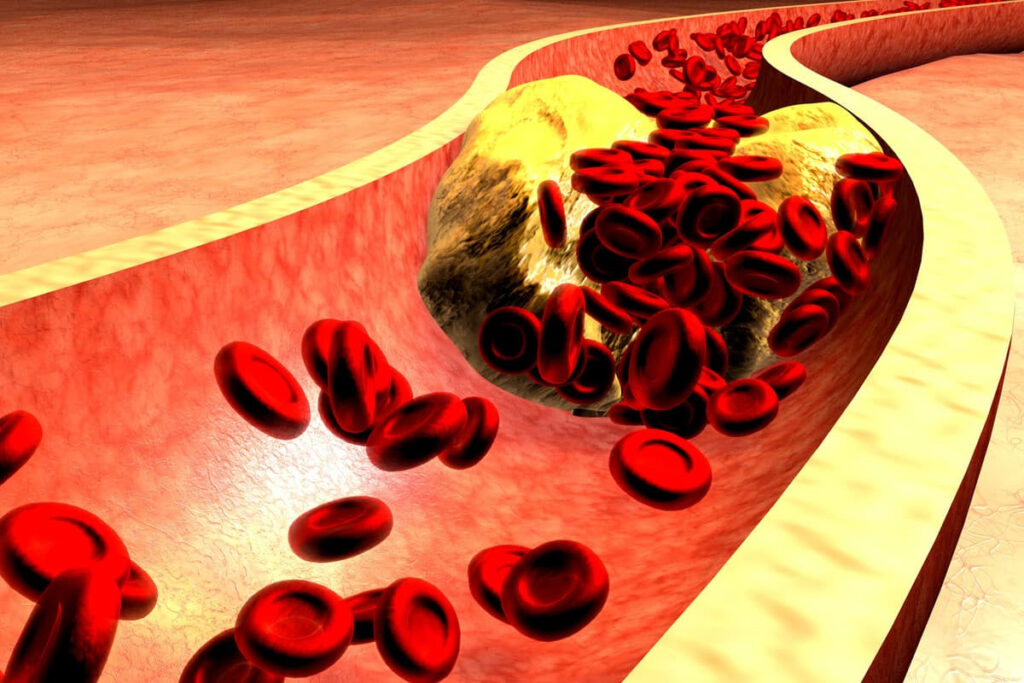By Paul McClure
Researchers have discovered a previously unknown step in how the body processes dietary cholesterol

Depositphotos
Researchers have identified a previously unknown step in the process by which dietary cholesterol is absorbed from the intestine into the bloodstream. The newfound pathway provides a potential new target for treating high cholesterol.
High cholesterol is a major risk factor for cardiovascular disease. While statins and dietary changes can lower cholesterol, researchers at UCLA Health have revealed how particular proteins, called Aster proteins, are key to the body’s processing of the fat-like substance and may have uncovered a novel approach to cholesterol management.
“Our results show that certain proteins in the Aster family play a critical role in moving cholesterol through the absorption and uptake process,” said Peter Tontonoz, corresponding author of the study. “The Aster pathway appears to be a potentially attractive target for limiting intestinal cholesterol absorption and reducing levels of plasma cholesterol.”
Intestinal absorption of dietary cholesterol has a major influence on blood cholesterol levels and is a complex, multi-step process. Free cholesterol is drawn into the plasma membrane of enterocytes, the cells that line the inner surface of the intestine, by a protein called Niemann-Pick C1 Like 1 (NPC1L1). It’s then moved into another part of the cell called the endoplasmic reticulum, where an enzyme called ACAT2 prepares the cholesterol for packaging and transport in a process called esterification. Cholesterol ester is packaged into chylomicrons for release into the bloodstream and delivery to tissues.
While it was previously understood that NPC1L1 was a key player in the process, what wasn’t fully understood was how cholesterol was transported from the exterior of the enterocyte to the endoplasmic reticulum. In the current study, the researchers discovered that when NPC1L1 pulls cholesterol from the intestine into the cell, it triggers the recruitment of Aster proteins resident in the endoplasmic reticulum.
“How cholesterol that enters the cell through NPC1L1 reaches the endoplasmic reticulum for esterification and regulation of cholesterol synthesis has been a longstanding mystery,” Tontonoz said. “We solve that mystery by showing that two members of the Aster protein family – Aster-B and -C – provide the link between NPC1L1 and ACAT2. By attaching to the plasma membrane, these proteins facilitate cholesterol transport to the endoplasmic reticulum.”
Additionally, the researchers found that Aster proteins may provide a new treatment target for controlling cholesterol levels. When they blocked the actions of Aster-B and -C in mice, cellular cholesterol stores dropped, and the processing of cholesterol was impaired.
“These findings highlight the Aster pathway as a physiologically important determinant of dietary lipid absorption that can be targeted pharmacologically,” the researchers said.
An existing drug, ezetimibe, targets NPC1L1, inhibits ACAT2 activity and reduces cholesterol absorption. It’s sometimes used in combination with statins to reduce blood cholesterol, but it doesn’t bind sufficiently to Aster proteins to completely prevent cholesterol transport. The researchers identified an experimental small-molecule drug called AI-3d that directly and potently inhibits Aster-A, -B, and -C, and has been shown, in mice and human cells, to inhibit cholesterol absorption.
The study was published in the journal Science.
Source: UCLA Health

Leave a Reply